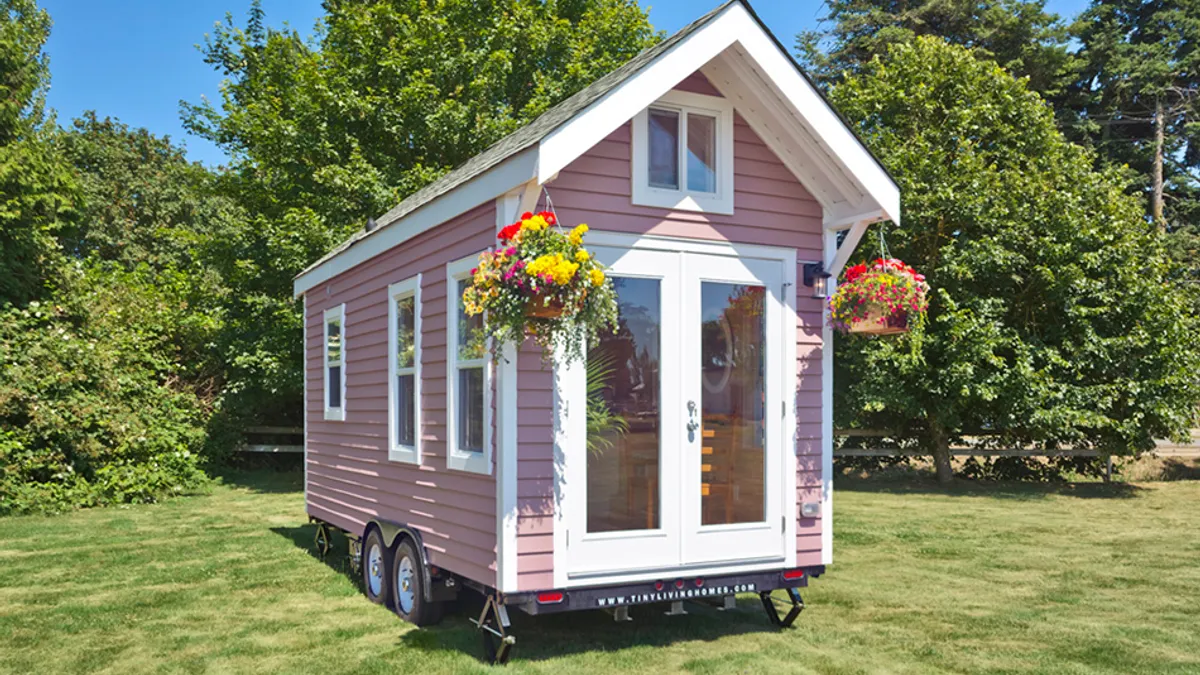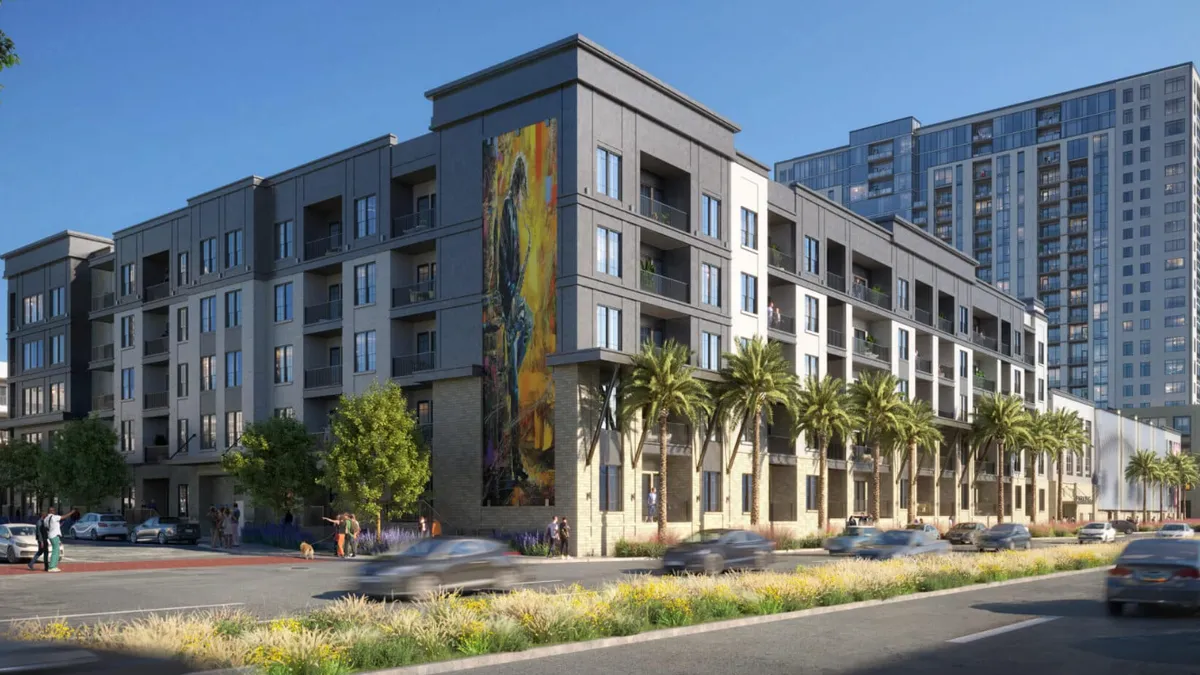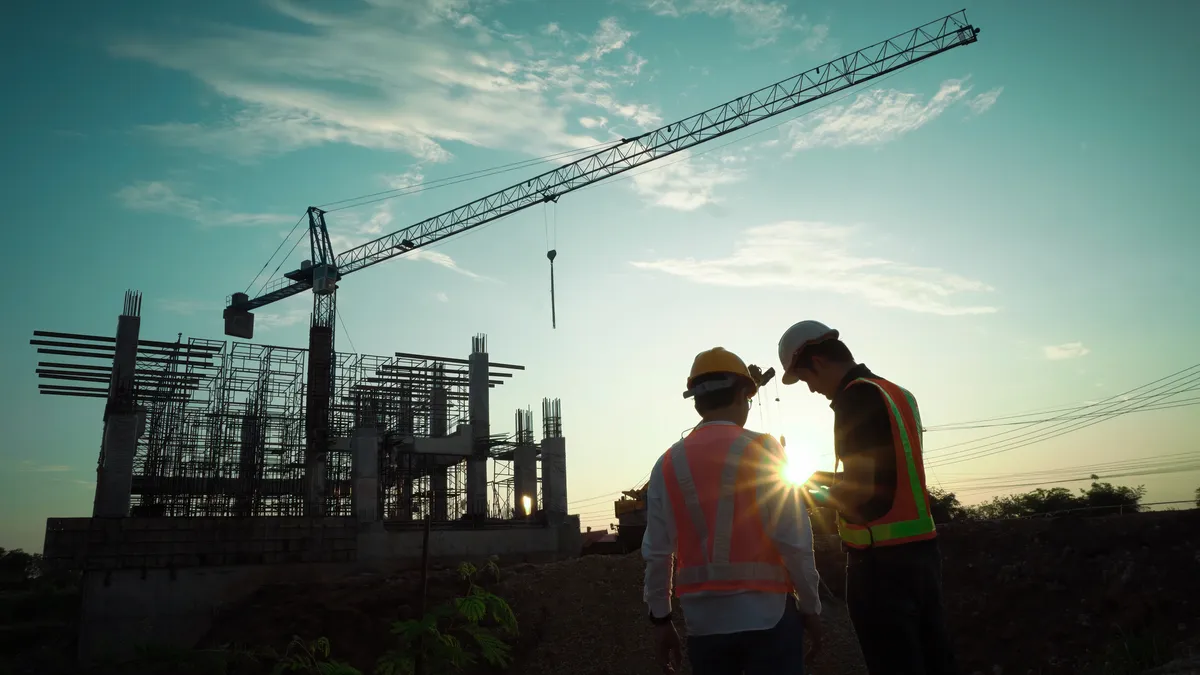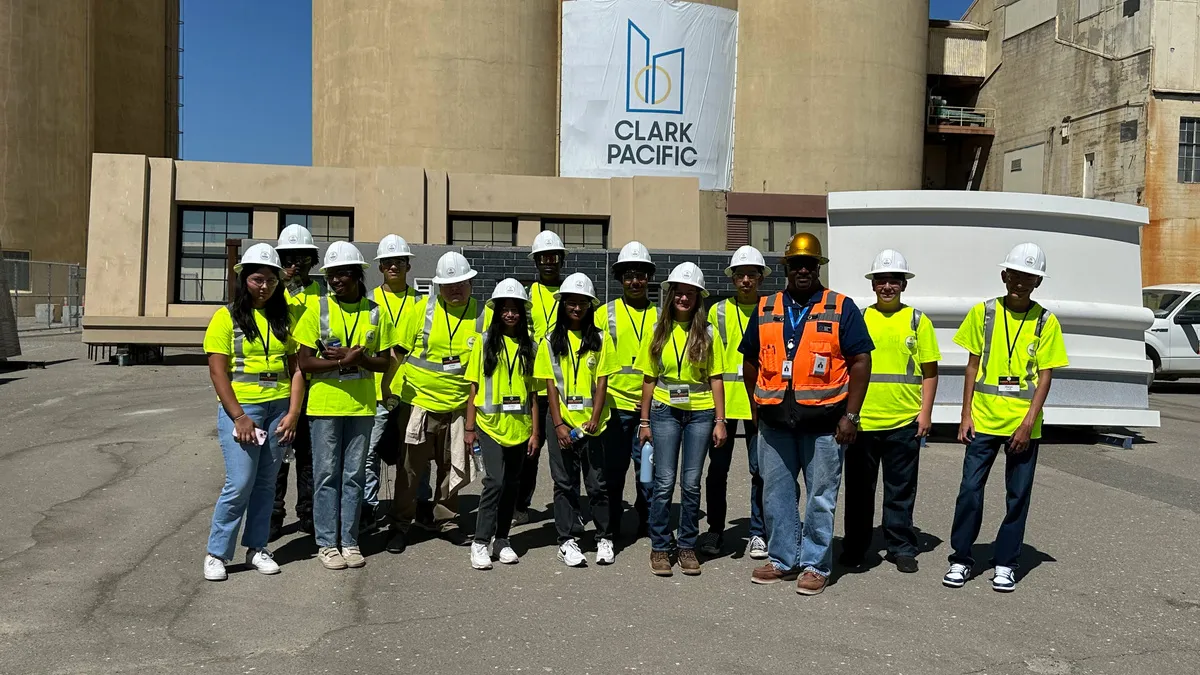Editor's note: The following is the second installment of Construction Dive's "Tiny house trends" series, which features interviews with tiny home builders. Read the first installment here.
It’s a homebuilder’s dream: People of all ages — even millennials — purchasing custom-built homes, rather than remaining renters. But where is this abundance of potential buyers? Vancouver-based builder Brian Persse said that, believe it or not, it’s in the tiny house market.
"I could see a lot of builders switching over to this type of work," he told Construction Dive. "There’s plenty of space for everybody."
Getting started
Persse, originally from Ireland, worked as a builder of traditional homes before moving to Canada. When he arrived in Vancouver, British Columbia, he took note of the climbing home prices that were unattainable to a significant portion of buyers. "There was a huge shortage in affordable housing," he said.
Persse and his wife started Tiny Living Inc. in 2013. Two years later, Persse and his wife’s business has now expanded to employ four full-time staff members. Tiny Living has sold more than 20 tiny houses, and demand has been consistently growing. "I don’t see [demand] slowing anytime soon," Persse said. "If anything, I could see it picking up. Especially as house prices increase."
The Tiny Living founders initially planned to target buyers who would build the structures for the lane-ways behind their larger houses and rent them out for a hefty return. They quickly discovered, however, that they would see strong demand from all types of customers seeking a more affordable housing option.
"We’ve noticed that all of our buyers have a completely different story," Persse said. "The units are not just for one particular type of person. People have this thing in mind that people are buying tiny homes because they can't afford a normal home, which is completely untrue. They can. It's just they choose not to. People are buying tiny homes because they see that it makes much more sense."
The company delivers the structures all across North America. It has sold tiny homes to college students, young couples and retirees. "There is really no particular type of person or age group for these units. It’s everybody," Persse said.
Business model
Tiny Living offers several models, and buyers can also submit custom requests for an original structure. Available sizes range from 20 feet long by 8 feet, 6 inches wide, up to 30 feet long. The tiny homes are constructed on custom-built trailers and meet legal road standards for size to be easily transported. The company subs out the electrical, gas installation and insulation work to specialists.
Tiny Living also offers a "shell" option, which allows buyers the opportunity to add the finishing touches to the house after the company constructs the exterior. However, Persse, noted, "when it actually boils down to it, most opt to have us build it all for them."
The standard homes include a "fully fitted" kitchen, bathroom with a shower unit, 10-foot-high ceilings, closet area, loft sleeping area, loft storage, and closed cell sprayfoam insulation to withstand colder climates.
Buyers start with the base price of $35,000 and can work their way up. Some have spent nearly $80,000 for a tiny house from the builder, according to Persse.
He said the company aims to maintain a low starting price point in order to stay appealing for buyers seeking out affordable properties. "We don't want to get away from the fact that these homes are designed to create affordable housing. I noticed that there are a lot of tiny home companies that are getting slightly carried away with the whole movement," he said.
Building on a much smaller scale doesn't come without its challenges. Persse said the most difficult aspect of constructing the tiny homes was figuring out how to incorporate standard-sized appliances into the smaller space. "We don’t want to use RV types of appliances. We want to use high-end house appliances," he said.
But after building the first few homes, the company’s workers ironed out those issues and established a standard building process to construct the houses. Currently, the build time for a house from Tiny Living ranges between four and six weeks for a standard 20-foot property.
Future prospects
The tiny house movement has gained national attention, as shows like "Tiny House Nation" and "Tiny House Hunters" draw TV viewers, and demand from buyers for the small structures picks up.
Persse thinks the fascination with tiny houses is less of a fad and more of a lasting trend in the housing market. "I don’t see it going away. I think it can go much bigger," he said. "The younger generation is not really interested in building these monster homes like the older generation, or even people in their 30s. They don't want to spend all of their time maintaining a big home."
As demand increases for tiny houses, smaller builders have been able to capitalize on the trend. But Persse noted that because his company has such a steady stream of customers, he isn't too concerned about competitors or saturation in the market. "Obviously, we would like to get a pretty good chunk of the market share. But at the same time, I do think there's room for plenty of people," he said.
Persse also hopes that cities will begin loosening their regulations on the properties, which have slowed the tiny house movement in some regions. "With the increase of rent and prices, these kinds of units are needed," he said.
Would you like to see more construction news like this in your inbox on a daily basis? Subscribe to our Construction Dive email newsletter!


















